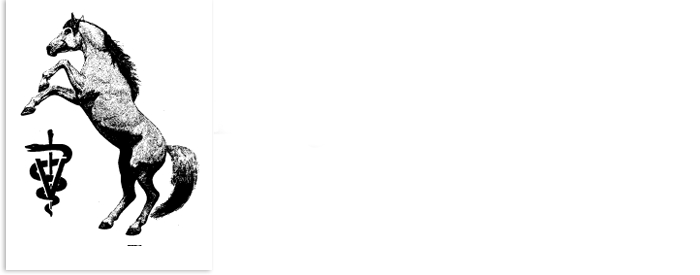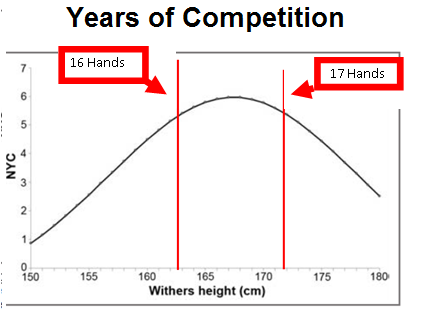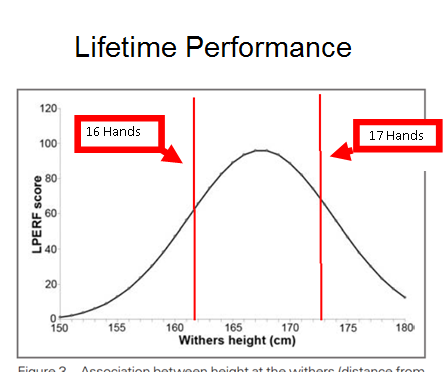Young Horse Inspections Can Indicate a Horse's Future
There is a big emotional, time, and monetary commitment when purchasing a young horse as a prospect for higher performance. With that in mind, I was intrigued to read the research conducted in Sweden extending from 1982 to 2005 on over 8000 horses. * Researcher Lina Jönsson, PhD of the Swedish University of Agricultural Sciences did the hard work of digitizing young horse inspection reports on 4 and 5-year-old Swedish warmbloods presented for inspection as prospect dressage and show jumpers during that period. She then obtained performance data from regional and national competitions through 2012 to determine both how many years overall the horses competed and how well these horses performed. With that many horses, conclusions can be drawn as extraordinary outlier horses, positive or negative, tend to be balanced out by horses with opposite results.
The inspection called the Riding Horse Quality Test, is a one-day test in which judges evaluate these 4 and 5-year-olds for conformation and walk and trot in-hand. Talent is evaluated. For dressage, this included judging gaits in-hand as well when ridden along with an evaluation of a horse's rideability. Talent for jumping was evaluated under rider or free jumping.
Further, a veterinary exam was performed that had three parts, an orthopedic exam, lameness exam, and hoof inspection. The orthopedic exam looked at things like excess joint fluid, effusion, heat, soreness, swellings, stiffness, and muscle atrophy. The lameness exam included walking and trotting in a straight line and while lunged in a circle as well as a single full limb flexion test on all four limbs. The hoof exam included looking at the size and symmetry of the hooves, recording hoof cracks, and other aspects of the hoof.
Results:
All the results cover over 100 pages. I will discuss some of the highlights that struck me as quite useful and thought-provoking.
Many Horses Never Ever Compete!
Looking at the table below you can see that only 58% of the horses ever competed (4746/8238).
Horses that never competed had significantly lower overall orthopedic health scores, lameness scores, trot scores, talent scores, and smaller circumference of cannon bones.
Horses often don't compete for very long.
The range of years in competition ranged from 0-19 years in this study. However, the mean number of years (meaning an equal number of horses were above and below this value) was three years. For horses that did show jumping and eventing, it was four years. For dressage horses, it was three years. Now lots of things can interrupt a horse's competition career. Still, that is a surprisingly low number considering how much effort I see clients put into getting their performance horses ready to compete.
Conformation matters and talent evaluations really are informative predictors of lifetime performance and longevity.
Horses that never competed tended to have lower conformation and talent scores. An increase of one point in the overall conformation scores represents a 0.08 to 0.33 years longer competition career. That might not seem so large, except when you think about the median number of years in competition being 3 or 4 years, it then takes on a larger significance.
The most important conformational characteristics were found to be proportionate horses with a well-positioned neck and long lines, including croup and neck. Conformation was important for all horses but appeared more important for dressage than for jumping horses. Among the most prominent conformation issues that were negative were stiff pasterns, both toed-in and toed-out forelimbs. Both small and large hock angles were also clearly associated with worse palpation scores and generally associated with effusions and excess joint fluid. However, horses with toed-out front limb conformation tended to have increased years in competition
Dressage and jumping talent scores also had strong associations with placings in competition later in their career. Talent scores for performance as a 4 or 5-year-old, including rideability, were significantly improved by a good conformation and health status of the horse.
Size Matters
Both the height of the horse at the withers and the circumference of a horse's cannon bone showed a strong relationship with both the number of years a horse competed and the lifetime performance.
The best results were for horses between 16 and 17 hands. The optimum circumference of the cannon bone area was found to be 21.5 to 22 centimeters. As the graphs below show, these 16-hand to 17-hand horses reached up to 6 years of competition and achieved much better competition lifetime performance. That is double the median 3 years in competition for all the horses. The red lines demarcate 16 and 17 hands.
Veterinary Findings Matter
It turned out to be extremely important as a negative predictor of negative veterinary findings were discovered.
Most horses had some findings in the three types of exams, hoof examination, orthopedic palpations - looking for areas of pain heat, and swelling, such as excess joint fluid (aka effusion) and a lameness exam, looking at the horse in motion and doing flexion tests.
Only 14% of the horses did not have one negative aspect on any of these three exams.
Most of the negative findings from the lameness part of the inspection came from positive flexion tests. Flexion tests are done by flexing up the leg and thus stressing the joints for a period of time, typically 60 to 90 seconds, then trotting the horse out. A positive flexion test means the horse limped for at least a few strides following this procedure.
A positive reaction was a strong negative predictor. 59.2% of horses without flexion test reactions went on to compete. If a horse had a minor flexion test reaction, that percentage dropped to 52.7%, and if a horse had a moderate or severe flexion test reaction that percentage dropped to 47.5%. Horses with moderate or severe flexion test reactions also generally had a 0.4-year shorter competition career than horses without flexion test reactions.
Other large negative associations were observed for atrophied croup or hamstring muscles, poor hoof wall quality, and excess fluid in fetlock joints, stifle joints, knee joints, and hind leg flexor tendon sheaths.
So the next time you are looking at a young horse, consider the results of this research. You can poke holes in specific aspects of this work. You can site individual horses that were exceptions. Nevertheless, by looking at over 8000 horses over multiple decades, clear trends emerge. Horses that demonstrate good conformation, have a medium height, good-sized cannon bones, and show innate talent at ages 4 and 5 tend to have longer and more successful careers. A young horse with several conformation issues, with muscle atrophy, with joint swellings, with positive flexion tests, and other findings, tends to have shorter and less accomplished careers.
As part of my practice, I can help you evaluate a young prospect by performing a thorough pre-purchase exam.
I presented a lecture on this research to a local CDS chapter. If you would like to hear that lecture for your own group, please call to arrange a time.
*Associations of health status and conformation with longevity and lifetime competition performance JAVMA, Vol 244, No. 12, June 15, 2014
Tetanus is deadly
Last month, I euthanized a yearling with Tetanus. Tetanus, also known as lockjaw, results from a small cut or nail puncture infected with Clostridium tetani. The bacteria releases a toxin causing muscles to contract. The jaw will lock shut, the back will arch, and the eye will be pulled back into the socket so you will see the third eyelid pulled over the eyeball. Even with treatment, it is almost always deadly once contracted.
I have seen between 6 and 10 such horses over my years in practice. None survived. These cases are heartbreaking because simply by vaccinating, they are nearly 100% preventable. None of these horses were up to date on vaccines.
The core vaccines protect your horse against diseases, Encephalitis, Tetanus, Influenza, Rhinopneumonitis, and West Nile Virus. If you have been putting it off, I urge you to reconsider. I don't want your horse to be the next case of any of these diseases that I see.
Only by having me, as your veterinarian, administer the vaccines, can you take advantage of support guarantees provided by the vaccine companies. They will cover up to $5000 for treatment if your horse does contract one of these diseases if the horse had been previously vaccinated by your veterinarian. By having my practice administer the vaccines, you know that it is done correctly, that accurate records are kept with me on my in-vehicle computer, and that you will receive reminders.




